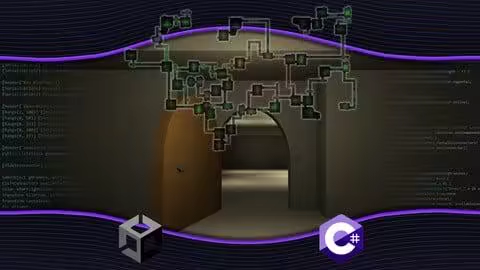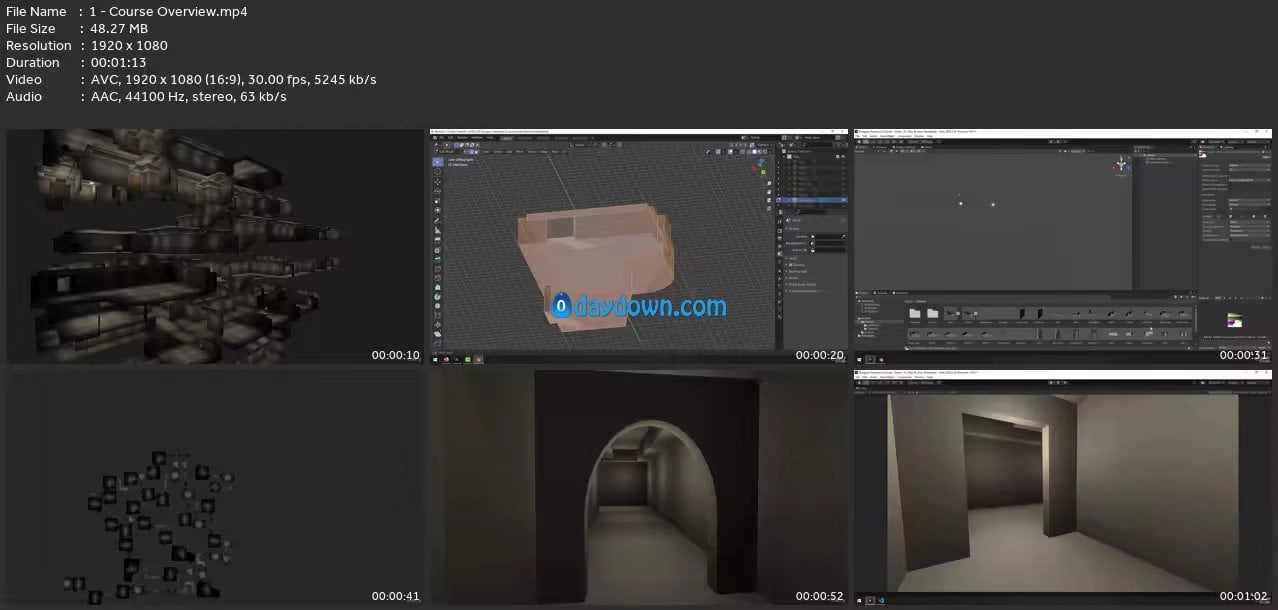
Last updated 3/2025
MP4 | Video: h264, 1920×1080 | Audio: AAC, 44.1 KHz
Language: English | Size: 2.76 GB | Duration: 6h 16m
Learn interior-only random dungeon generation using a geomorph method that connects modular rooms and hallways in C#
What you’ll learn
Develop a procedural dungeon generator that assembles rooms and hallways dynamically using C#.
Create modular room and hallway prefabs in Blender and import them into Unity for use in procedural generation.
Write C# scripts to connect rooms at runtime, ensuring seamless and randomized dungeon layouts.
Implement backtracking and collision detection logic to refine dungeon structure and prevent placement issues.
Spawn interactive objects, doors, and exit triggers dynamically to enhance level variety.
Optimize procedural generation performance for smooth gameplay and resource efficiency.
Requirements
Basic familiarity with Unity – You should understand how to create projects, manage GameObjects, and use prefabs.
Some experience with C# scripting – Prior programming knowledge is required, as this course focuses heavily on procedural logic.
Blender experience is helpful but not required – Pre-made 3D models are included, but an understanding of Blender will help if you want to customize or expand your modular assets.
A willingness to work with code – This course involves structured, logic-driven programming to build a complete procedural system.
Description
Create endless, dynamically generated 3D dungeons using C# and modular assets in Unity!This course will teach you how to build a procedural dungeon generator that assembles randomly connected rooms and hallways using a geomorphic system. Each room and hallway prefab seamlessly connects at 90-degree orientations along the north, south, east, and west entry points, allowing for limitless dungeon variations.What You’ll Learn:★ Write a complete procedural dungeon generator in C# that dynamically assembles modular dungeon layouts.★ Manipulate prefabricated rooms and hallways in Unity to create seamless, randomly generated interiors.★ Export modular assets from Blender to Unity as FBX files and convert them into prefabs for procedural use.★ Understand geomorphic dungeon generation and how to design prefabs that interconnect at fixed entry points.★ Expand your dungeon system by designing custom rooms and hallways that integrate with your procedural algorithm.This course is designed for intermediate Unity developers who want to add procedural dungeon generation to their projects. We’ll jump straight into writing structured, efficient C# code, focusing on how to create dynamic, ever-changing dungeons using a prefab-based geomorph system.Whether you’re developing rogue-like games, RPG dungeons, or randomized environments, this course will provide the tools you need to implement a powerful procedural generation system in Unity.★ Enroll now and start building your own procedural dungeons in Unity today!
转载请注明:0daytown » C# Procedural Random Dungeon Generator In Unity 3D & Blender
 Password/解压密码www.tbtos.com
Password/解压密码www.tbtos.com